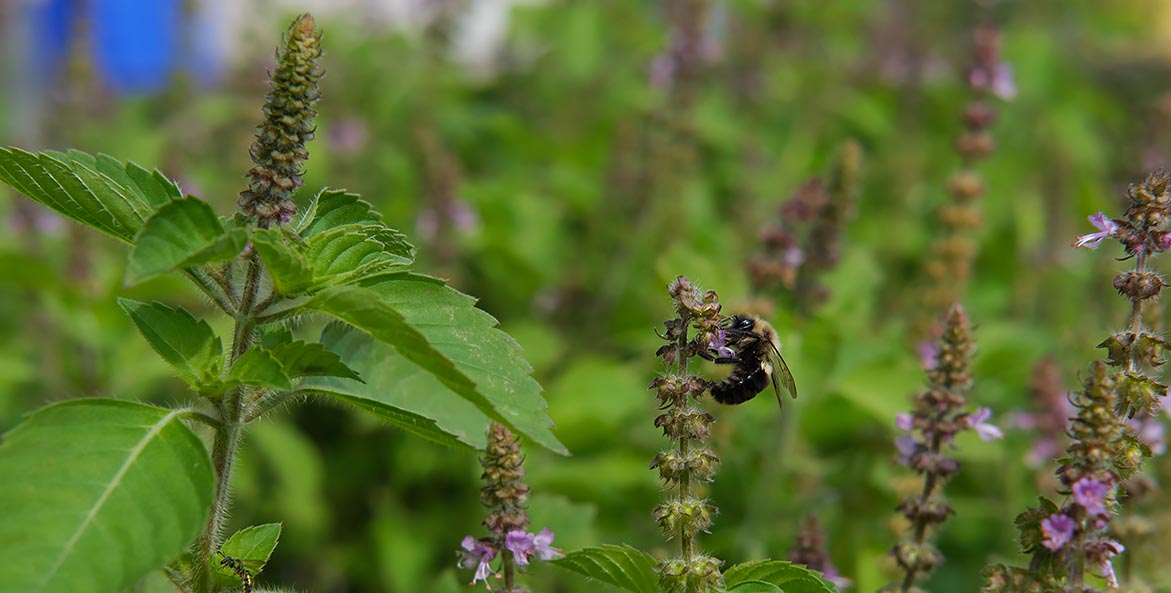Find our complete Nature Journal series here.
“If you’ve never been thrilled to the very edges of your soul by a flower in spring bloom, maybe your soul has never been in bloom.” —poet Terri Guillemets (also known as Audra Foveo-Alba)
April is when our world reawakens from its winter slumber. The Romans named the month after their word meaning “to open or blossom.” April is the first full month of spring, a time of rapid rebirth and growth, when the days grow longer and the nights get shorter.
As the sun starts to warm the earth, tiny shoots from the rich, warm soil begin to appear. Migrating birds, like ospreys and hummingbirds, return to their nesting grounds and backyard feeders. Spring peepers sing their loudest songs and redwing blackbirds dot the tall grasses of the wetlands. Deciduous trees burst into color as their tender, lime green leaf buds unfurl and their flowers blossom. The ground and tree canopy fill with the sounds of bustling young squirrels and energetic chipmunks, an acknowledgement that nature is changing.
Many naturalists use spring as a time to focus on these seasonal nuances in their journals. Phenology is the study of seasonal differences, especially in regard to weather and life cycles. A phenology wheel is a simple visual representation of environmental changes over a month, season, or year. Naturalists often add month-long phenology wheels to their journals or pick a specific flowering tree to document for an entire year. Dogwoods, eastern redbuds, and flowering crabapples are all trees in bloom in my yard.
What springtime changes can you document in your part of the watershed? There is so much to see, hear, smell, taste, and draw this time of year!
Further reading: Chesapeake Almanac: Following the Bay Through the Seasons by former CBF Senior Naturalist John Page Williams, Jr.
Prompt #9: April Phenology Wheel
Materials Needed: Nature journal or paper, pen or pencil, coloring materials
Assignment: A phenology wheel is a way of documenting natural changes over time in a circular format. Take a look at a few examples from the additional resources listed below to understand how to lay out your April phenology wheel. Templates are available on those webpages. Draw a series of concentric circles. Devote the outer circle to the days in the month. Within the inner circles, document your daily observations over the course of the month, including: weather, temperature, lunar cycle, daily activities, etc.
Additional resources:
- Oceanic Engineering Society, Earthzine: "Phenology Wheels"
- National Phenology Network: "Status of Spring"
- Partners in Place
- University of Vermont Phenology Blog: "Phinal Phenology"
Journal Prompt: When you start your phenology wheel, write a letter to yourself to read one month from now. Describe all the changes you hope to see in the month of April. Write about what you are looking forward to seeing happen outside in nature.
Prompt #10: Birds on the Brain
Materials Needed: Nature journal or paper, pen or pencil, coloring materials, Internet access
Assignment: Many birds are migrating back to the Chesapeake Bay watershed this month. One of the best ways to prepare for their arrival is to study photographs and learn observational clues so you can more readily spot them in the wild.
Choose a migratory bird that lives in the Chesapeake Bay watershed, such as the blue-winged teal, brown pelican, norther harrier, ruby-throated hummingbird, yellow-rumped warbler, purple martin, or northern parula. Spend some time researching your bird. Draw sketches of the bird in your nature journal, including its colors, markings, and specific details like where it nests, when it is most active, and variations between males and females, and between juveniles and adults. These studies will enable you to better spot these amazing birds as they return to the area.
Additional resources:
- Chesapeake Bay Program: Bird Guide
- The Cornell Lab, All About Birds: "Take Note! Tips for Keeping A Field Notebook"
- National Audubon Society, In the Field: How to Go from Watching Birds to Drawing Them
Journal Prompt: If birds went to school, what sort of classes would they need to take? What can humans learn from birds?
Prompt #11: Similes
Materials Needed: Nature journal or paper, pen or pencil, coloring materials
Assignment: Find a safe spot to observe outside (backyard, porch, by a window). Describe your environment around you using similes (a figure of speech comparing two things using “like” or“as”). For example, “squirrels gather and store nuts likestudents gather knowledge to use later.”
Additional resources:
- PBS: Wordgirl
- Denver Art Museum: "Poetry with natural similies and metaphors"
Journal Prompt: List what surprised you as you were comparing and creating similes.
Prompt #12: Pressing Matter
Materials Needed: Nature journal or paper, pen or pencil, coloring materials, large book, extra scrap paper, Internet access or field guides, glue or tape
Assignment: Explore outside and gather leaves, flower petals, feathers, and other mostly flat natural objects. Use guidebooks to identify what you have found. After jotting down your observations and inquiries, place your findings between two sheets of scrap paper and store them inside a large book. In a week, check out your treasures and glue or tape them into your nature journal.
Additional resources
- Sea Grant: Classification and Identification
- Penn State University: "Dendrology Scavenger Hunt"
Journal Prompt: After researching the objects and specie(s) you found, draw and label a diagram of the organism it came from. Write about all the things that help keep this organism healthy, happy, and strong.
We would love you to share your nature journal entries on CBF's Learn Outside Facebook Group!



